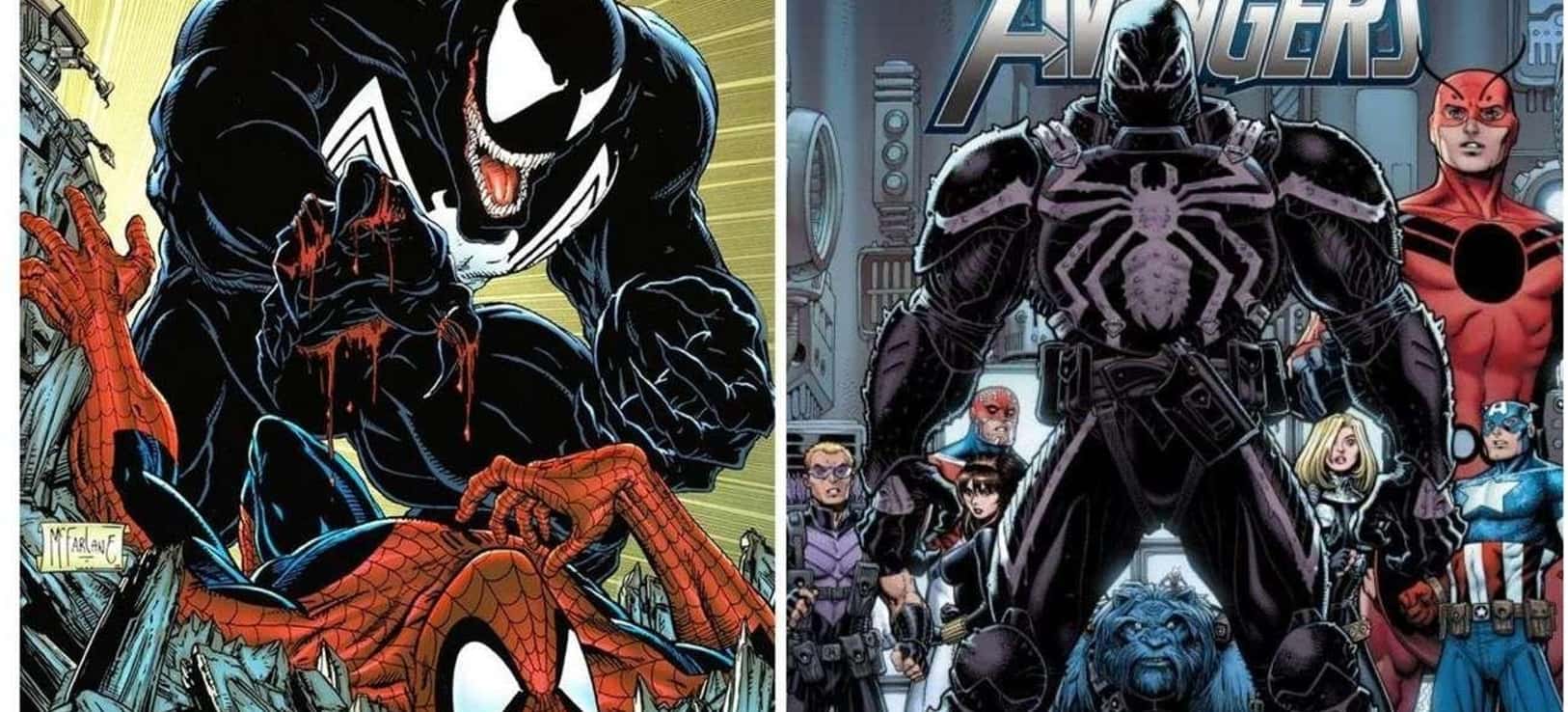Legacy superheroes are an integral part of the comic book world. When a title needs shaking up, the current holder of the mantle will die or retire or get thrown through time, and someone else will step into their superpowered shoes … for a little while. Most of the time, they step aside a few months down the road when the original makes some kind of grand return.
Every now and then, replacement heroes outperform the originals, but they usually still have to give up the tights when the time comes to bring back the status quo. But in the most special and unique situations, the person who takes over a superheroic mantle elevates the very concept of the character to a higher level and there’s no looking back.
1. The Original Green Lantern Run Ended in the ’40s, But Hal Jordan Brought It Back In A Big Way
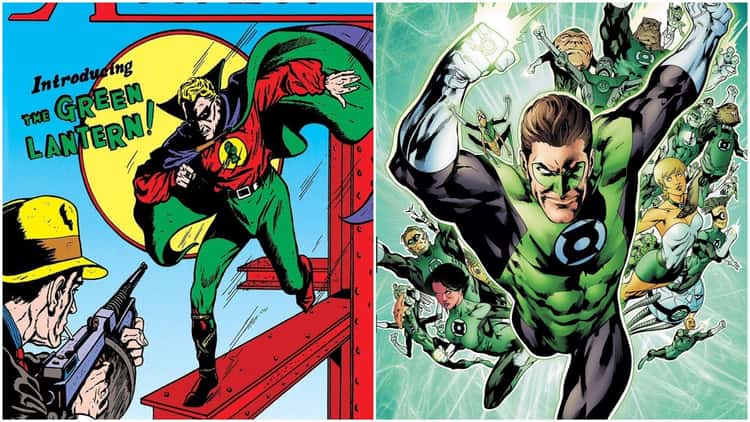
The Original: Alan Scott was the first DC character to go by Green Lantern, debuting in 1940’s All-American Comics #16. Scott carried a magic ring that granted him a whole host of powers, and he regularly had to charge it with a magic green lantern, hence his nickname. As Green Lantern, Scott would help found the Justice Society of America in 1941 – but just a few years after that, his run was canceled. Decades later, he’d pop back into DC Comics canon, and he’s remained there ever since, though occasionally hailing from alternate timelines and continuities.
The Level Up: DC attempted to revive a handful of its superhero titles in the late ‘50s with new secret identities and superpowers, and Green Lantern was one of the first in line for the reboot treatment. Hal Jordan was introduced as the wielder of a Power Ring that ran on sheer willpower and was entrusted to him by a dying alien, thus inducting him into the intergalactic Green Lantern Corps. From there, the mythos of the Corps, their members, and their countless space-bound feats sprung forth – but it all started with Jordan.
The less said about his foray onto the silver screen, however, the better. Subsequent Green Lanterns John Stewart and Kyle Rayner may have come close to equaling Jordan’s impact, but they did not surpass it.
2. Barry Allen Was The Second Flash And Brought The Multiverse To DC Comics
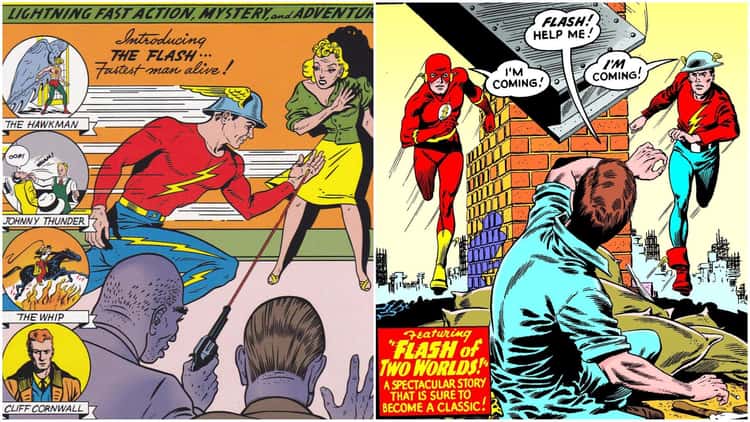
The Original: Jay Garrick was first on the starting block as DC Comics’ the Flash, making his debut in 1940’s Flash Comics #1. Sporting his iconic colander helmet and basically just super-fast, Garrick became a founding member of the Justice Society of America. Then, when superheroes fell out of favor after WWII, the JSA began dropping off like flies, and the Flash could only outrun cancellation until 1949. He’d later be reinserted into official DC Comics canon through a variety of methods (but more on that later).
The Level Up: When DC Comics attempted to reboot the character of Flash alongside several other forgotten superheroes, they handed the mantle to Barry Allen and had him contract super-speed from a freak lightning strike to his chemical forensics lab. As the Flash, Allen joined the Justice League and learned everything there was to know about the Speed Force, an energetic entity that empowers all speedsters and ties the whole DC Universe together.
Speaking of which, The Flash #123 introduced the concept of the DC Multiverse with the landmark “Flash of Two Worlds!” Within, Allen met Garrick, who at that point came from Earth-2, an alternate timeline featuring all of DC’s discarded continuity – and such multiversal adventures have since become the backbone of the publisher’s storytelling. Other Flashes, like Wally West, would follow, but none would change DC Comics like Barry Allen, who’s also held down multiple TV series, a twice-released team-up movie, and a development-plagued solo film.
3. Atom Has Disappeared And Reappeared A Couple Times, But Ryan Choi Seems Poised To Stick Around
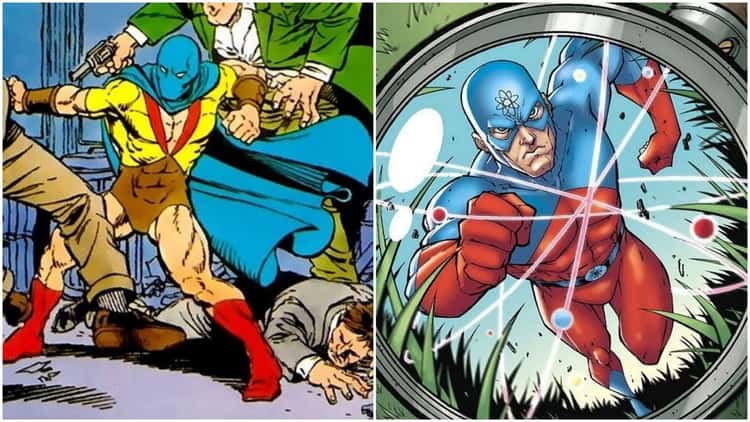
The Original: When the Atom first appeared in 1941’s All-American Comics #19, he was a fairly run-of-the-mill costumed crimefighter notable only for his diminutive size. In time, Al Pratt would join the Justice Society of America and gain a super-strong “atomic punch,” but he remained relatively unpopular and wasn’t even rebooted alongside his teammates in the late ’50s.
The Level Up: When Ray Palmer became the new Atom in 1961’s Showcase #34, he arrived with a set of size-changing superpowers that actually fit the codename. Soon enough, he was a regular on the Justice League, on TV, and at the center of several major DC Comics crossovers, including the notorious Identity Crisis, in which his ex-wife slew several prominent characters. These days, however, Palmer has disappeared to the Microverse, and another has taken up his mantle.
The Second Level Up?: Ryan Choi only made his official debut as the Atom in 2006, but he’s covered a lot of ground since then. As Palmer’s apprentice, Choi mastered and expanded upon the science of changing size, plying his trade with the Teen Titans first, then the Justice League. He was slain by Deathstroke to make way for the return of Palmer to the title but was then restored and given the job full-time as of 2015’s DC Rebirth. And it was Choi, not Palmer or Pratt, who made it onto the silver screen first via the 2021 Snyder Cut of Justice League, a role that was supposed to launch the character toward a solo film.
4. There Was A Human Torch Before Johnny Storm With Basically The Same Powers, But They Have Nothing To Do With Each Other
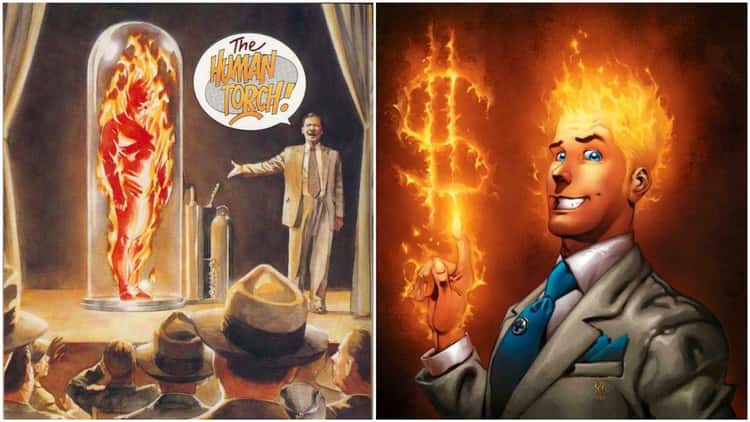
The Original: The Human Torch 1.0 made his debut before WWII and back when Marvel still went by Timely Comics. Appearing in 1939’s Marvel Comics #1, this Human Torch was one of the world’s first superheroes of any kind and, confusingly enough, not a human. Though he later adopted the name Jim Hammond, the Human Torch was an android created by Phineas Horton that could engulf his entire artificial body in flame on command – after he learned to control it, anyway. The Human Torch went on to ally with Captain America and the Invaders against the Axis Powers and was then decommissioned, appearing much later as the basis for the Vision’s body (and then, even later, restored to his initial state).
The Level Up: In 1961, Johnny Storm debuted along with the rest of the Fantastic Four, and though he borrowed the name and powerset of the OG Human Torch, the two characters were otherwise unrelated. The runaway success of the FF kicked off the modern era of Marvel Comics – thanks in no small part to Johnny and his rebellious charm. After portrayals by MCU darlings Chris Evans and Michael B. Jordan, the second Human Torch remains one of the biggest names in Marvel.
Put differently, the second Human Torch is a good portion of the reason why there even was a Marvel Universe into which the original Human Torch could reappear.
5. Stargirl Took Over For Starman And Made The Jump To TV
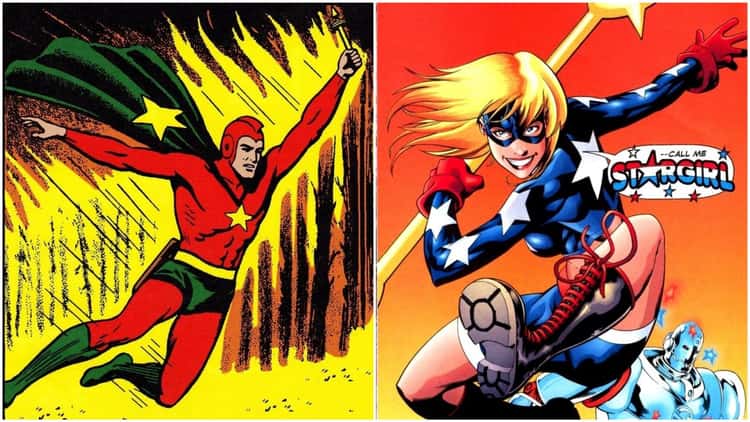
The Original: The concept of Starman is a somewhat unique one in the world of superhero comics, in that it’s a mantle that is built to be passed on. Ted Knight was the first to heft the Cosmic Rod in 1941’s Adventure Comics #61 and was a founding member of the Justice Society of America. Like many of his fellow heroes, Starman’s run was canceled in the early ‘50s, but unlike his contemporaries, he was not rebooted later in the decade. Instead, he passed the Cosmic Rod on to a series of other Starmen.
None of them caught on or lasted long, however, until Ted’s son Jack took up the mantle in 1994. As Starman, Jack Knight would hold down a successful solo series but fail to make much noise in the DC mainstream.
The Level Up: Courtney Whitmore first appeared in 1999’s Stars and S.T.R.I.P.E. #0 as the second Star-Spangled Kid, a role she wore for a number of years. Then, after joining the JSA in 2003, Whitmore was gifted the Cosmic Rod by Jack and changed her moniker to “Stargirl.” Since then, she’s survived multiple continuity reboots, became a member of the Justice League of America, and currently stars in her very own television series – an honor previously unobtained by any wielder of the Cosmic Rod.
6. The Second Blue Beetle Became The Inspiration For Night Owl, While The Newest Version Went Back To The Character’s Roots
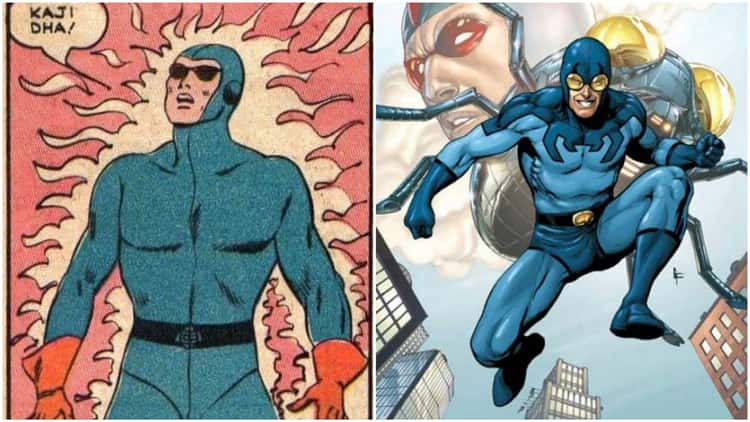
The Original: The original Blue Beetle was Dan Garret (or Garrett, depending on whom you ask), and he was empowered with ambiguous special abilities by a sacred scarab (or a magic vitamin, depending on whom you ask). He first appeared under Fox Comics in 1939, and then was sold to Charlton Comics – where he was promptly replaced by Ted Kord.
The Level Up: Unlike Garret, Kord had no superpowers to speak of, and instead used his intellect and scientific ingenuity to fight for justice – along with his prodigious wealth. Like all Charlton characters, both Blue Beetles were sold to DC Comics in the late ‘80s, but it was Kord who would serve as the basis for Watchmen’s Nite-Owl, and Kord who was chosen to join the Justice League of America, bringing the character firmly into the mainstream. From there, his quirky guffaw and buddy-cop vibe with Booster Gold earned him legions of admirers.
The Second Level Up?: Jaime Reyes was the first Blue Beetle actually created by DC Comics, and he soon put his own unique stamp on the mantle after Kord’s untimely demise. Going back to the whole sacred scarab thing, Reyes used the item to construct himself an advanced ancient battlesuit, becoming a far more powerful superhero than either of his two predecessors had ever been. Reyes joined the Teen Titans and became a mainstay there, enough so that when the entire DC Universe was rebooted for The New 52, he came out the other side as the only Blue Beetle currently working – though Kord has recently been reintroduced due to popular demand.
7. Black Canary Has Gone Through All Sorts Of Strange Variations, But DC Finally Landed The Superpowered Version Everyone Loves
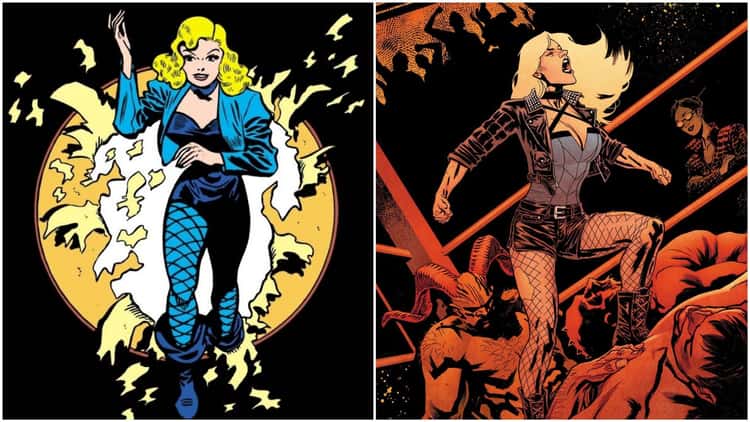
The Original: Dinah Drake was introduced as a supporting character in 1947’s Flash Comics #86, but she soon rose to prominence in her own right, joining the Justice Society of America and becoming one of DC Comics’ first successful woman heroes. Drake fell into obscurity along with most superheroes as the ‘40s ended – only to be revived alongside the likes of Jay Garrick and Alan Scott as denizens of Earth-2.
From there, Black Canary became a mainstay, eventually moving to Earth-1 and starting a relationship with the Green Arrow following the loss of her first husband. Somewhere along the way, the previously unpowered Drake developed a mysterious super-scream, and she didn’t seem to have aged nearly as much as her JSA comrades – all of which would be explained by a convenient retcon a few years down the road.
The Level Up: In 1983, a Justice League of America storyline explained that Dinah Drake and Larry Lance had given birth to a daughter cursed with a sonic scream, Dinah Laurel Lance. Some weird comic book stuff happened, the younger Dinah ended up braindead, and a dying Dinah Sr. had her consciousness placed within her daughter’s mind – allowing the original Black Canary to keep fighting with a fresh body and an all-new set of superpowers.
This mildly creepy origin was rewritten through 1986’s Crisis on Infinite Earth, simplifying it to just Dinah Lance taking over the mantle of her mother. Then 2011’s The New 52 went a step further by combining the two into one, singular Dinah Drake. Any way you slice it, the superpowered version of Black Canary has been the one that’s stuck, and that has since become a mainstay of the Justice League and the Birds of Prey.
8. Vision Debuted In The ’40s, But He Didn’t Become The Vision We All Know Until The Late ’60s
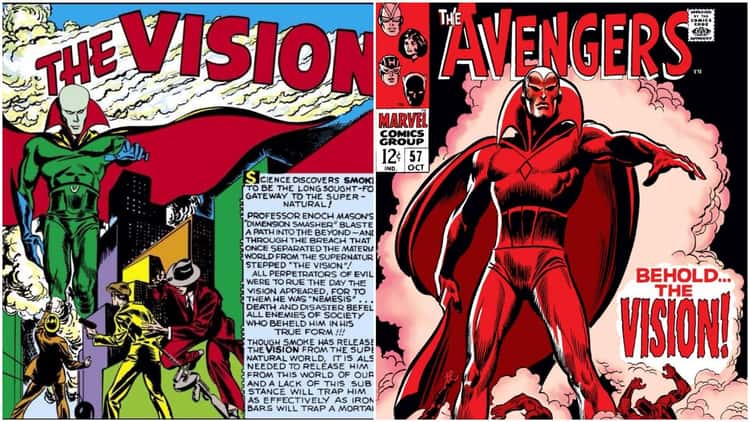
The Original: First appearing in 1940’s Marvel Mystery Comics #13 under the banner of Timely Comics, the original Vision was created by Joe Simon and Jack Kirby, the same duo who came up with Captain America. Unlike the modern Vision, Aarkus was an alien cop with smoke-based powers who somehow found himself embroiled in the drama of WWII, and unlike Cap, he didn’t make the transition into the modern era of Marvel Comics – at least, not until a miniseries retroactively placed him on the Invaders several decades later.
The Level Up: Debuting in 1968’s Avengers #57 as the accidentally benevolent creation of Ultron, the all-new Vision borrowed a name and some distinct wardrobe choices from Aarkus – though he was born from an ill-fated attempt to bring back the original. Instead, the synthezoid became a fan favorite Avenger through skirmishes with his father and a lengthy romance with the Scarlet Witch, before moving on to be a lynchpin of the Marvel Cinematic Universe and then a sitcom star.
9. Ant-Man Has Been Around Since The Beginning Of The Avengers, But Scott Lang Finally Made Him Cool
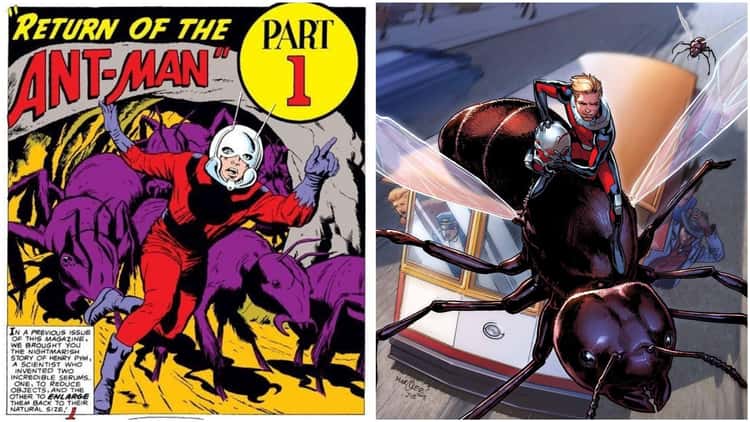
The Original: Hank Pym was, and continues to be, a pretty big deal in the Marvel Universe. As Ant-Man/Giant-Man/Yellowjacket/Goliath, he founded the Avengers, broke up the Avengers, and invented Ultron. Due to his indefensible mistreatment of then-wife Janet van Dyne, Pym remains a controversial figure in comic book circles, and that’s precisely why both Marvel Comics and the Marvel Cinematic Universe have both decided to skip on him and pass the mantle on to Scott Lang. In the latter franchise, Pym is deceased and currently being worn around as a meat-puppet by Ultron, and in the former, he’s played by the retirement-aged Michael Douglas.
The Level Up: Scott Lang first appeared in 1979’s The Avengers #181, and later that year took Pym’s Ant-Man suit and Pym Particles in a desperate attempt to swipe enough money to save his sick daughter. Pym liked the cut of Lang’s jib and let him keep the suit, and from there on, Lang was the full-time Ant-Man until he was slain in a roundabout fashion by the Scarlet Witch decades later.
The role of Ant-Man bounced a bit between Pym and the equally distasteful Eric O’Grady until Lang’s resurrection, after which Lang has again taken over as the one-and-only Ant-Man. That’s probably not going to change, either, after Paul Rudd’s beloved onscreen portrayal of the character – or with both Pym and O’Grady shuffled off to the comic book afterlife.
10. Batwoman Was Created So People Wouldn’t Think Batman Was Gay, But She Ended Up Becoming An Iconic LGBTQ+ Superhero
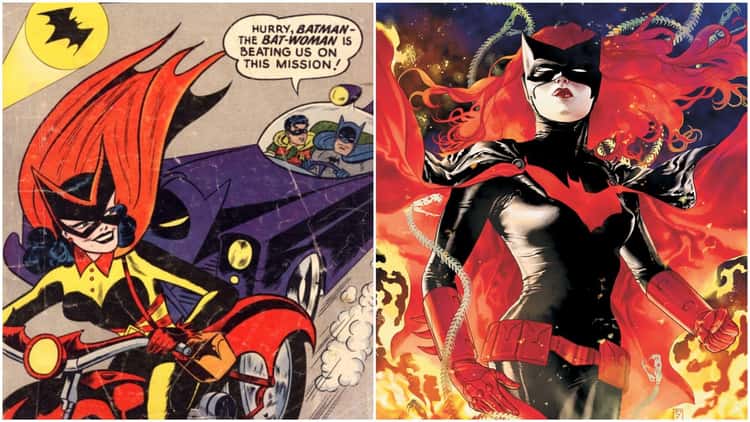
The Original: Kathy Kane, the OG Batwoman, has a sordid history that has nothing to do with her qualities as a character. Following Dr. Fredric Wertham’s infamous Seduction of the Innocent and its insinuations that, among other things, Batman and Robin were coded gay men, DC Comics scrambled to adjust the Dark Knight against the allegations – and so Batwoman was introduced to the “Batman Family” in 1956 to make sure it was a little more heteronormative, often acting more like a romantic interest to Bruce Wayne than a true crimefighting ally. When things settled, Kane was quietly swept into the continuity dustbin and has only made sparing appearances since.
The Level Up: Following the continuity-altering events of Infinite Crisis, Batwoman was reimagined in 2006 as Kate Kane, a former soldier inspired into a life of superheroism by the actions of her cousin, Bruce Wayne. Right off the bat, Kate stood out from the crowd as one of the only openly gay protagonists in mainstream comics, and her queerness was even embedded into her origin story as the reason why she was discharged from the army. As Batwoman, Kane has established herself as a true peer of Batman’s, and one of the leaders of the Bat-Family – and she’s also gone on to star in her own television series.
11. Carol Danvers Is The One Who Made Captain Marvel The Powerhouse Character We Know Today
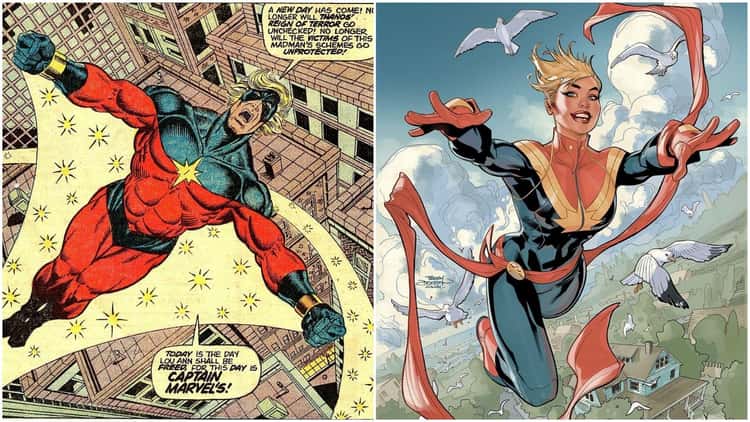
The Original: Mar-Vell was a Kree supersoldier assigned to infiltrate Earth, where he soon fell in love with the local people and their culture. As Captain Marvel, he decided to rebel against the Kree Empire and defend his adopted home instead. Though he was popular among in-universe characters and real-life Marvel diehards, Mar-Vell never really hit the mainstream. In fact, his most notable legacy may be starring in the first-ever Marvel graphic novel, The Death of Captain Marvel – and in the supporting character, he accidentally empowered years earlier, Carol Danvers.
The Level Up: As Ms. Marvel, Danvers was a romantic interest, sidekick, and peer of Captain Marvel for some time before the space-cancer took him. Even after becoming a big hitter with multiple super-teams, Danvers avoided picking up Mar-Vell’s discarded mantle, allowing a handful of his children to try out being Captain Marvel while she toiled away under codenames like Binary and Warbird. It wasn’t until 2012 – exactly 30 years after Mar-Vell’s demise – that Danvers finally became Captain Marvel, but she’s sure made up for lost time since. Not only has Carol discovered her own half-Kree heritage and upped her power levels far beyond Mar-Vell’s, but she’s also become a headlining Avenger, starred in her own never-ending solo series, and joined the Marvel Cinematic Universe with her very own debut film.
12. While Carol Danvers Was Busy Making Captain Marvel A Hero Again, Kamala Khan Was Redeeming Ms. Marvel
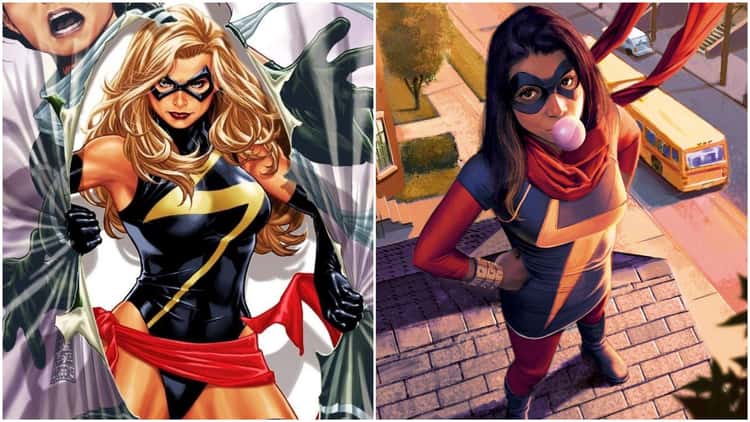
The Original: Though Carol Danvers is now a cinematic A-Lister as Captain Marvel, she certainly wasn’t one when she went by Ms. Marvel. Often little more than an Avengers background character, Danvers’ most prominent storylines as Ms. Marvel were probably the time she got forcibly impregnated by her own son from the future and the time Rogue sucked out all her power and put her into a coma for a decade. Not exactly highlights, nor a character with an abundance of agency.
The Level Up: Danvers leveled herself up when she became Captain Marvel, but redemption was also in store for the mantle of Ms. Marvel. It would be picked up by Kamala Khan, a Muslim Pakastani-American teen and also secretly an Inhuman, something she discovered when a cloud of Terrigen Mist was released into Earth’s atmosphere and she developed the ability to “embiggen” her body.
A lifelong superhero fangirl, Khan took up the discarded codename of her all-time favorite, Danvers, and became Ms. Marvel. Since then, she’s become a bestselling solo star, founded her own teen-team, the Champions, joined the Avengers, and earned her own Disney+ series in the Marvel Cinematic Universe. Not bad for a character that’s less than 10 years old (in real-world time).
13. Eddie Brock Made Venom Popular, But Flash Thompson Made Him A Real Hero
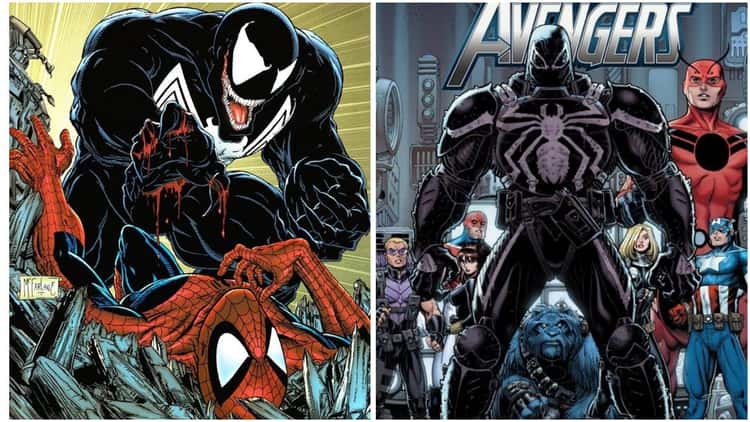
The Original: Right from their first full-named appearance in 1988’s The Amazing Spider-Man #300, Venom was a hit. The combination of Eddie Brock and a symbiote once worn, then spurned by Peter Parker, Venom proved to be Spidey’s worst nightmare – and the fans’ delight. Venom soon became so popular that they earned their own title, where they roughly transitioned into an antihero of sorts. Attempts to flesh Venom out into a full-fledged superhero, however, would be unsuccessful – as long as the relatively unlikable Brock was wearing the suit, that is.
The Level Up: The Venom symbiote was passed on to a handful of lowlifes – and one superpowered lowlife in the Scorpion – before it found itself in government custody – and then bound to disabled veteran and former high school bully Eugene “Flash” Thompson. Together, Flash and the symbiote became Agent Venom, an (almost) fully heroic take on the character that garnered enough superheroic street cred to join the (Secret) Avengers and the Guardians of the Galaxy, among other team-ups.
Even when Flash gave his life to save his ol’ pal Spider-Man and the symbiote ended up back with Brock, the reputation remained. Brock and his alien life partner became the centerpiece of multiple Marvel Comics crossovers where they palled around with all of Earth’s Mightiest Heroes – to say nothing of their long-awaited big-screen debut.
The original Venom is now recognized as a true, blue superhero in his own right, but it was the heroism of Flash Thompson that made it all possible.

